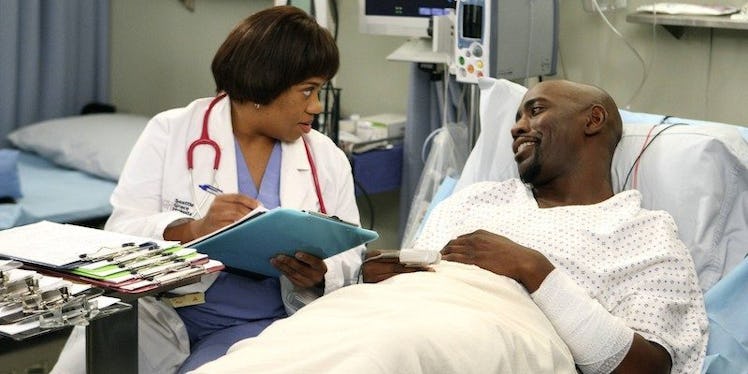
What Your Healthcare Routine Will Probably Look Like In 10 Years
If you wear a Fitbit, use the calorie counter MyFitnessPal or obsessively check your steps per day on the iPhone's Health app, you know technology has the capacity to transform your healthcare routine.
Wearable technology has been pretty huge in fitness and health for a number of years now, and it shows no signs of slowing its infiltration of the exercise scene. At the Consumer Electronic Show this January, companies like Samsung and Hexoskin showcased the new generation of connected clothing, from t-shirts and leggings to socks and sports bras, all of which are designed to help you maximize your workouts and monitor your body in the process.
Every year, more and more mobile apps dedicated to health and fitness are released on the Apple Store, many of which now work together, sharing data so you can more accurately track your energy intake and outflow.
But the marriage of healthcare and technology goes far beyond fitness. Technology has the potential to completely transform the whole healthcare system in the next 10 to 15 years, making quality medical assistance far more accessible and direct than ever before.
Consider this scenario: Your 75-year-old diabetic uncle insists on living alone. He generally does a good job taking care of himself, but from time to time, he forgets to take his medication, which often leads to a surge in blood sugar levels and a fainting episode. This also results in a spike in the anxiety levels of everyone else in your family.
Sound familiar?
Fast forward a decade. By attaching a small sensor to his medicine bottle, you'll get an alert to your phone anytime he misses a pill. He'll be wearing a monitor which tests his blood pressure and oxygen levels, and based on computer algorithms and his electronic health record that's stored in the cloud, you'll automatically receive a report advising you on how to best handle the situation from afar.
If the software finds he's in need of medical attention, you'll be able to click a button to call an ambulance to his house, take him to the nearest hospital and alert his primary doctor. The same app will also notify all family members and order an Uber to pick up the closest relative to the hospital so that he or she can be there by the time he arrives.
This may sound like a crazy version of Disney's "Smart House," but health information technologies are quickly making scenarios like this one a reality. A recent survey conducted by Aeris found that 84 percent of healthcare professionals believe that telemedicine devices are now sophisticated enough to deliver similar outcomes for patients who receive treatment instructions virtually to those treated in-person.
In an age of overcrowded hospitals and overworked doctors, this means that more people will be able to be treated quicker and more efficiently, saving insurance companies and patients money and time, and allowing ER doctors to more effectively focus their energy on patients who really need in-person care.
Because health records will be stored in the cloud, it will be easier for doctors to make the correct diagnosis quickly, and it will mean people in rural communities won't have to drive five hours to learn that they just need to hydrate more to get rid of a splitting headache.
Patients who need routine check-ups will be able to receive remote healthcare monitoring in their own homes, and when your child falls down and hurts her wrist in a soccer game, you'll be able to go through a series of questions on an electronic portal that will help you determine if you two will be spending dinnertime in the ER, if you can wait to schedule an x-ray in a few days and who the best orthopedic doctors covered by your insurance are in the area.
Healthcare is on the road to becoming more accessible, democratic and far less of a headache than we're used to. Having a steady stream of unified data on your health available to all your doctors at any time will help them arrive at smart, fast decisions about how to best treat any symptoms you're experiencing, and this may well all be done via video chat.
However, privacy, security and data sharing issues threaten to slow the process of these healthcare transformations. Technology can only power a healthcare revolution if patients trust that their sensitive medical data is secure in the cloud, and if the vendors of electronic records don't charge prohibitive fees, creating barriers to data sharing so that patients stay loyal to a particular healthcare provider or technology.
The path to a digital healthcare future will no doubt have obstacles, but it's clear that we're moving in the right direction.